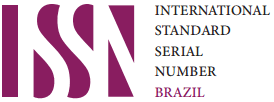Telemedicine, telepsychiatry, and perinatal depression
DOI:
https://doi.org/10.25118/2236-918X-6-3-1Keywords:
Telemedicine, women’s health, depressionAbstract
Perinatal depression (PD) is the obstetric complication with the highest rates of underdiagnosis and is an important risk factor for suicide, which is considered to be one of the most common causes of maternal mortality. Consequently, mental health care should be a priority during pregnancy and the postpartumperiod, as the early identification of PD may bring substantial health benefits to the mother, child, and family. The main psychometric instrument used for secondary prevention of PD is the Edinburgh Postnatal Depression Scale, validated for Brazilians and for use in telemedicine (TM). The use of TM is considered a breakthrough in obstetrics as well. The application of psychometric instruments via TM produces information with similar or greater accuracy when compared with local, paper-and-pencil, face to face application. In addition, it allows for greater honesty due a greater perception of privacy, thus reducing the influence of stigma. Therefore, the use of TM and telepsychiatry in women’s mental health has become a promising clinical strategy to expand access and improve the results of PD screening.
Downloads
Metrics
References
Kessler RC. Epidemiology of women and depression. J Affect Disord. 2003;74:5-13.
O’Hara MW, Wisner KL. Perinatal mental illness: definition, description and aetiology. Best Pract Res Clin Obstet Gynaecol. 2014;28:3-12.
Stuart-Parrigon K, Stuart S. Perinatal depression: an update and overview. Curr Psychiatry Rep. 2014;16:468.
Castro E Couto T, Brancaglion MY, Cardoso MN, Faria GC, Garcia FD, Nicolato R, et al. Suicidality among pregnant women in Brazil: prevalence and risk factors. Arch Womens Ment Health. 2016;19:343-8.
Khalifeh H, Hunt IM, Appleby L, Howard LM. Suicide in perinatal and non-perinatal women in contact with psychiatric services: 15 year findings from a UK national inquiry. Lancet Psychiatry. 2016;3:233-42.
Fuhr DC, Calvert C, Ronsmans C, Chandra PS, Sikander S, De Silva MJ, et al. Contribution of suicide and injuries to pregnancy-related mortality in low-income and middle-income countries: a systematic review and meta-analysis. Lancet Psychiatry. 2014;1:213-25.
Pereira PK, Lovisi GM. Prevalência da depressão gestacional e fatores associados. Rev Psiquiatr Clin. 2008;35:144-53.
Figueira P, Fernandes Malloy-Diniz L, Aurélio Romano-Silva M, Silva Neves F, Corrêa H. Postpartum depression and comorbid disorders: frequency and relevance to clinical management. Arch Womens Ment Health. 2009;12:451.
Theme Filha MM, Ayers S, Gama SG, Leal Mdo C. Factors associated with postpartum depressive symptomatology in Brazil: The Birth in Brazil National Research Study, 2011/2012. J Affect Disord. 2016;194:159-67.
Almeida MS, Nunes MA, Camey S, Pinheiro AP, Schmidt MI. [Mental disorders in a sample of pregnant women receiving primary health care in Southern Brazil]. Cad Saude Publica. 2012;28:385-93.
Hanley GE, Oberlander TF. The effect of perinatal exposures on the infant: antidepressants and depression. Best Pract Res Clin Obstet Gynaecol. 2014;28:37-48.
Chan J, Natekar A, Einarson A, Koren G. Risks of untreated depression in pregnancy. Can Fam Physician. 2014;60:242-3.
Committee on Obstetric Practice. The American College of Obstetricians and Gynecologists Committee Opinion no. 630. Screening for perinatal depression. Obstet Gynecol. 2015;125:1268-71.
Milgrom J, Gemmill AW. Screening for perinatal depression. Best Pract Res Clin Obstet Gynaecol. 2014;28:13-23.
Le HN, Perry DF, Sheng X. Using the internet to screen for postpartum depression. Matern Child Health J. 2009;13:213-21.
Marcano-Belisario JS, Gupta AK, O’Donoghue J, Morrison C, Car J. Tablet computers for implementing NICE antenatal mental health guidelines: protocol of a feasibility study. BMJ Open. 2016;6:e009930.
Pineros-Leano M, Tabb KM, Sears H, Meline B, Huang H. Clinic staff attitudes towards the use of mHealth technology to conduct perinatal depression screenings: a qualitative study. Fam Pract. 2015;32:211-5.
Conselho Federal de Medicina (CFM). Código de Ética Médica [Internet]. [cited 2016 Mar 08]. portalmedico.org.br/novocodigo/integra.asp
Conselho Federal de Medicina (CFM). Resolução 1643/2002 [Internet]. 2002 [cited 2016 Mar 08]. portalmedico.org.br/resolucoes/cfm/2002/1643_2002.htm
Conselho Federal de Medicina (CFM). Resolução 1890/2009 [Internet]. 2009 [cited 2016 Mar 08]. portalmedico.org.br/resolucoes/cfm/2009/1890_2009.htm
World Medical Association (WMA). Statement on guiding principles for the use of telehealth for the provision of health care [Internet]. [cited 2016 Mar 08]. wma.net/en/30publications/10policies/t5/index.html.pdf?print-media-type&footerright=[page]/[toPage]
Conselho Federal de Medicina (CFM). Resolução 1974/2011 [Internet]. 2011 [cited 2016Mar 08]. portalmedico.org.br/resolucoes/CFM/2011/1974_2011.htm
Recuero R. Redes sociais na internet. Porto Alegre: Sulina; 2009.
Dias RS, Marques AFH, Diniz PRB, Silva TAB, Cofi el L, Mariani MMC, et al. Telemental health in Brazil: past, present and integrati on into primary care. Arch Clin Psychiatry (São Paulo). 2015;42:41-4.
Castro Filho E. Telessaúde no apoio a médicos de atenção primária [tese]. Porto Alegre: Universidade Federal do Rio Grande do Sul; 2011.
Yang YT, Iqbal U, Ching JH, Ting JB, Chiu HT, Tamashiro H, et al. Trends in the growth of literature of telemedicine: a bibliometric analysis. Comput Methods Programs Biomed. 2015;122:471-9.
Marti n-Khan M, Woott on R, Whited J, Gray LC. A systemati c review of studies concerning observer agreement during medical spe- cialist diagnosis using videoconferencing. J Telemed Telecare. 2011;17:350-7.
Sanders KA, Patel R, Kiely JM, Gwynn MW, Johnston LH. Improving telestroke treatment ti mes in an expanding network of hospitals. J Stroke Cerebrovasc Dis. 2016;25:288-91.
Flodgren G, Rachas A, Farmer AJ, Inzitari M, Shepperd S. Interacti ve telemedicine: eff ects on professional practi ce and health care outcomes. Cochrane Database Syst Rev. 2015;9:CD002098.
Kotb A, Cameron C, Hsieh S, Wells G. Comparati ve eff ecti veness of diff erent forms of telemedicine for individuals with heart failure (HF): a systemati c review and network meta-analysis. PLoS One. 2015;10:e0118681.
Huang Z, Tao H, Meng Q, Jing L. Management of endocrine disease. Eff ects of telecare interventi on on glycemic control in type 2 diabetes: a systemati c review and meta-analysis of randomized controlled trials. Eur J Endocrinol. 2015;172:R93-101.
Chen J, Jin W, Zhang XX, Xu W, Liu XN, Ren CC. Telerehabilitati on approaches for stroke pati ents: systemati c review and meta-analysis of randomized controlled trials. J Stroke Cerebrovasc Dis. 2015;24:2660-8.
Widmer RJ, Collins NM, Collins CS, West CP, Lerman LO, Lerman A. Digital health interventi ons for the preventi on of cardiovascular disease: a systemati c review and meta-analysis. Mayo Clin Proc. 2015;90:469-80.
Toma T, Athanasiou T, Harling L, Darzi A, Ashrafi an H. Online social networking services in the management of pati ents with diabetes mellitus: systemati c review and meta-analysis of randomised controlled trials. Diabetes Res Clin Pract. 2014;106:200-11.
Elbert NJ, van Os-Medendorp H, van Renselaar W, Ekeland AG, Hakkaart-van Roijen L, Raat H, et al. Eff ecti veness and cost-eff ecti veness of ehealth interventi ons in somati c diseases: a systemati c review of systemati c reviews and meta-analyses. J Med Internet Res. 2014;16:e110.
de Waure C, Cadeddu C, Gualano MR, Ricciardi W. Telemedicine for the reducti on of myocardial infarcti on mortality: a systemati c review and a meta-analysis of published studies. Telemed J E Health. 2012;18:323-8.
Frade S, Rodrigues H. Benefi ts, challenges and impact of teleconsultati on - a literature review. Stud Health Technol Inform. 2013;192:1157.
Wilcox ME, Adhikari NK. The eff ect of telemedicine in criti cally ill pati ents: systemati c review and meta-analysis. Crit Care. 2012;16:R127.
American Psychiatric Associati on (APA). Resource document on telepsychiatry and related technologies in clinical psychiatry [Internet]. [cited 2016 Mar 08]. http://www.psychiatry.org/File%20Library/Psychiatrists/Directories/Library-and-Archive/resource_documents/Resource-2014-Telepsychiatry-Clinical-Psychiatry.pdf
World Health Organizati on (WHO). Global e-Health Survey [Internet]. [cited 2016 Mar 08]. who.int/goe/data/global_e-health_survey_2009_en.pdf
Dwyer TF. Telepsychiatry: psychiatric consultati on by interacti ve television. Am J Psychiatry. 1973;130:865-9.
Chakrabarti S. Usefulness of telepsychiatry: a criti cal evaluati on of videoconferencing-basedapproaches. World J Psychiatry. 2015;5:286-304.
Salmoiraghi A, Hussain S. A systematic review of the use of telepsychiatry in acute settings. J Psychiatr Pract. 2015;21:389-93.
Sunderji N, Crawford A, Jovanovic M. Telepsychiatry in graduate medical education: a narrative review. Acad Psychiatry. 2015;39:55-62.
Seidel RW, Kilgus MD. Agreement between telepsychiatry assessment and face-to-face assessment for Emergency Department psychiatry patients. J Telemed Telecare. 2014;20:59-62.
Chipps J, Brysiewicz P, Mars M. Effectiveness and feasibility of telepsychiatry in resource constrained environments? A systematic review of the evidence. Afr J Psychiatry (Johannesbg). 2012;15:235-43.
Hilty DM, Ferrer DC, Parish MB, Johnston B, Callahan EJ, Yellowlees PM. The effectiveness of telemental health: a 2013 review. Telemed J E Health. 2013;19:444-54.
Vaitheswaran S, Crockett P, Wilson S, Millar H. Telemental health: videoconferencing in mental health services. Adv Psychiatr Treat. 2012;18:392-8.
Gajaria A, Conn DK, Madan R. Telepsychiatry: effectiveness and feasibility. Curr Psychiatry Rep. 2015;3:59-67.
Bashshur RL, Shannon GW, Bashshur N, Yellowlees PM. The empirical evidence for telemedicine interventions in mental disorders. Telemed J E Health. 2015 Dec 1. [Epub ahead of print]
Hilty D, Yellowlees PM, Parrish MB, Chan S. Telepsychiatry: effective, evidence-based, and at a tipping point in health care delivery? Psychiatr Clin North Am. 2015;38:559-92.
Shore JH. Telepsychiatry: videoconferencing in the delivery of psychiatric care. Am J Psychiatry. 2013;170:256-62.
Deslich S, Stec B, Tomblin S, Coustasse A. Telepsychiatry in the 21(st) century: transforming healthcare with technology. Perspect Health Inf Manag. 2013;10:1f.
Hilty DM, Crawford A, Teshima J, Chan S, Sunderji N, Yellowlees PM, et al. A framework for telepsychiatric training and e-health: competencybased education, evaluation and implications. Int Rev Psychiatry. 2015;27:569-92.
Chan S, Parish M, Yellowlees P. Telepsychiatry today. Curr Psychiatry Rep. 2015;17:89.
Shore JH. The technological transformation of psychiatric care- telepsychiatry comes of age. Int Rev Psychiatry. 2015;27:467-8.
Boydell KM, Hodgins M, Pignatiello A, Teshima J, Edwards H, Willis D. Using technology to deliver mental health services to children and youth: a scoping review. J Can Acad Child Adolesc Psychiatry. 2014;23:87-99.
Cain S, Sharp S. Telepharmacotherapy for child and adolescent psychiatric patients. J Child Adolesc Psychopharmacol. 2016 Jan 8. [Epub ahead of print]
Mohr DC, Burns MN, Schueller SM, Clarke G, Klinkman M. Behavioral intervention technologies: evidence review and ecommendations for future research in mental health. Gen Hosp Psychiatry. 2013;35:332-8.
Sharp IR, Kobak KA, Osman DA. The use of videoconferencing with patients with psychosis: a review of the literature. Ann Gen Psychiatry. 2011;10:14.
Martin-Khan M, Wootton R, Whited J, Gray LC. A systematic review of studies concerning observer agreement during medical specialist diagnosis using videoconferencing. J Telemed Telecare. 2011;17:350-7.
Johnston B, Yellowlees P. Telepsychiatry consultations in primary care coordinated by virtual care navigators. Psychiatr Serv. 2016;67:142.
Fortney JC, Pyne JM, Turner EE, Farris KM, Normoyle TM, Avery MD, et al. Telepsychiatry integration of mental health services into rural primary care settings. Int Rev Psychiatry. 2015;27:525-39.
Shore J. The evolution and history of telepsychiatry and its impact on psychiatric care: current implications for psychiatrists and psychiatric organizations. Int Rev Psychiatry. 2015;27:469-75.
Yellowlees P, Richard Chan S, Burke Parish M. The hybrid doctor-pati ent relati onship in the age of technology - telepsychiatry consultati ons and the use of virtual space. Int Rev Psychiatry. 2015;27:476-89.
Hyler SE, Gangure DP, Batchelder ST. Can telepsychiatry replace in-person psychiatric assessments? A review and meta-analysis of comparison studies. CNS Spectr. 2005;10:403-13.
van Ballegooijen W, Riper H, Cuijpers P, van Oppen P, Smit JH. Validati on of online psychometric instruments for common mental health disorders: a systemati c review. BMC Psychiatry. 2016;16:45.
WMA. Statement on the ethics of telemedicine [Internet]. [cited 2016 Mar 08]. wma.net/en/30publications/10policies/t3/index.html.pdf?print-media-type&footer-right=[page]/[toPage]
Hungerbuehler I, Leite RFM, ilt MTV, Gatt az WF. A randomized clinical trial of homebased telepsychiatric outpati ent care via videoconferencing: design, methodology, and implementati on. Arch Clin Psychiatry (São Paulo). 2015;42:76-8.
Chipps J, Ramlall S, Madigoe T, King H, Mars M. Developing telepsychiatry services in KwaZulu-Natal -- an acti on research study. Afr J Psychiatry (Johannesbg). 2012;15:255-63.
World Psychiatric Associati on. Psychiatry, medicine and primary care [Internet]. [cited 2016 Mar 08]. wpanet.org/detail.php?secti on_id=7&category_id=25&content_id=1293
Junior JR, Rocha R. Psiquiatria da mulher. Programa de atualização em psiquiatria. Porto Alegre: Artmed; 2015.
Guidance for eff ecti ve discipline. American Academy of Pediatrics. Committ ee on Psychosocial Aspects of Child and Family Health. Pediatrics. 1998;101:723-8.
Kingston D, McDonald S, Biringer A, Austi n MP, Hegadoren K, McDonald S, et al. Comparing the feasibility, acceptability, clinical-, and costeff ecti veness of mental health e-screening to paper-based screening on the detecti on of depression, anxiety, and psychosocial risk in pregnant women: a study protocol of a randomized, parallel-group, superiority trial. Trials. 2014;15:3.
LaRocco-Cockburn A, Melville J, Bell M, Katon W. Depression screening atti tudes and practi ces among obstetrician-gynecologists. Obstet Gynecol. 2003;101:892-8.
Kerker BD, Storfer-Isser A, Stein RE, Garner A, Szilagyi M, OʼConnor KG, et al. Identi fying maternal depression in pediatric primary care: changes over a decade. J Dev Behav Pediatr. 2016;37:113-20.
Kingston D, Austi n MP, Heaman M, McDonald S, Lasiuk G, Sword W, et al. Barriers and facilitators of mental health screening in pregnancy. J Aff ect Disord. 2015;186:350-7.
Magann EF, McKelvey SS, Hitt WC, Smith MV, Azam GA, Lowery CL. The use of telemedicine in obstetrics: a review of the literature. Obstet Gynecol Surv. 2011;66:170-8.
Meltzer-Brody S, Boschloo L, Jones I, Sullivan PF, Penninx BW. The EPDS-Lifeti me: assessment of lifeti me prevalence and risk factors for perinatal depression in a large cohort of depressed women.Arch Womens Ment Health. 2013;16:465-73.
Downloads
Published
How to Cite
Conference Proceedings Volume
Section
License

This work is licensed under a Creative Commons Attribution-NonCommercial 4.0 International License.
Debates em Psiquiatria allows the author (s) to keep their copyrights unrestricted. Allows the author (s) to retain their publication rights without restriction. Authors should ensure that the article is an original work without fabrication, fraud or plagiarism; does not infringe any copyright or right of ownership of any third party. Authors should also ensure that each one complies with the authorship requirements as recommended by the ICMJE and understand that if the article or part of it is flawed or fraudulent, each author shares responsibility.
Attribution-NonCommercial 4.0 International (CC BY-NC 4.0) - Debates em Psiquiatria is governed by the licencse CC-By-NC
You are free to:
- Share — copy and redistribute the material in any medium or format
- Adapt — remix, transform, and build upon the material
The licensor cannot revoke these freedoms as long as you follow the license terms. Under the following terms:
- Attribution — You must give appropriate credit, provide a link to the license, and indicate if changes were made. You may do so in any reasonable manner, but not in any way that suggests the licensor endorses you or your use.
- NonCommercial — You may not use the material for commercial purposes.
No additional restrictions — You may not apply legal terms or technological measures that legally restrict others from doing anything the license permits.






























